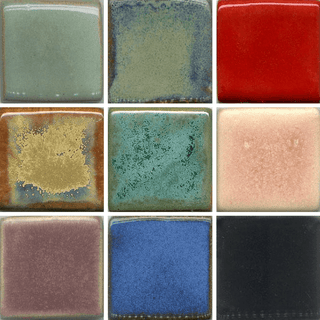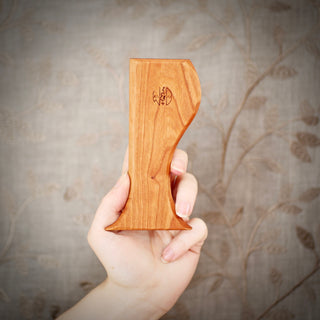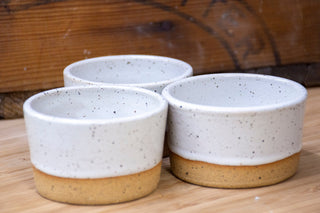
What is Specific Gravity (sg)?
It is a calculations of how many particles of actual glaze material exist in a standard unit, in this case, in 100ml of water. If we can find out how dense the particle count is, then we'll know how thickly the glaze will apply.
Calculating a "sweet spot" of 145-150sg ensures you've mixed the glaze properly and that you're getting the best possible outcome for your glaze.
If you're a visual learner, this cool graphic might help put all the pieces into place!

You'll need:
- A digital scale
- A graduated cylinder that measures up to 100ml.
Step 1: We're going to work in the unit "grams." Place your graduated cylinder on the scale and measure it's weight. This graduated cylinder is 14g.
Step 2: With your graduated cylinder still on the scale, pour your glaze into it up to the 100g mark (Remember: 100 ml = 100 g).
Step 3: Read the weight showing on the digital scale, then subtract 14g (the weight of the graduated cylinder).
Step 4: That final number is your glaze's current specific gravity!
You want to have a glaze that is within 145-150 sg.







